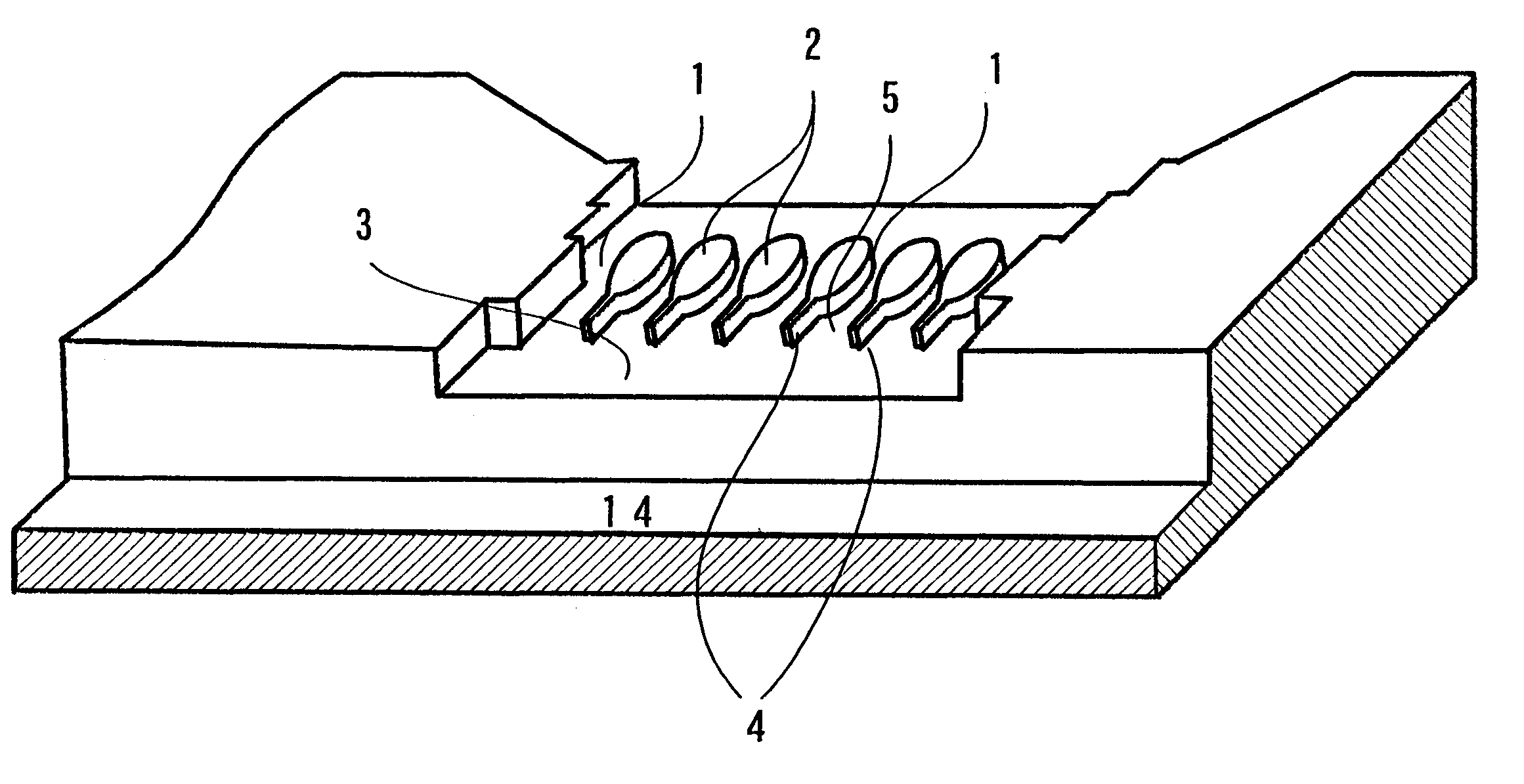Microchannel apparatus and method of producing emulsions making use thereof
- Summary
- Abstract
- Description
- Claims
- Application Information
AI Technical Summary
Problems solved by technology
Method used
Image
Examples
Embodiment Construction
Preferred embodiments of the present invention will now be described referring to the attached figures.
In the microchannel apparatus according to the present invention, a microchannel 1 is formed between adjacent convex portions 2 defined on a surface of a base 13, which convex portions 2 are formed on a terrace 3 which is also defined by the surface of the base as a boundary section between a continuous phase and a dispersed phase.
A partition wall 4 is formed extending from both ends of each convex portion 2 toward the continuous phase and the dispersed phase, respectively. The partition walls 4 are parallel each other and a flow path 5 is formed between the partition walls 4. The length of the partition wall 4 as shown in the figures does not reach to the ends of the terrace 3, however, the length of the partition wall 4 is not be limited to the depicted structure and may reach to the ends of the terrace 3.
It is preferable to adopt a wet etching process with photolithography used ...
PUM
| Property | Measurement | Unit |
|---|---|---|
| Length | aaaaa | aaaaa |
| Flow rate | aaaaa | aaaaa |
| Width | aaaaa | aaaaa |
Abstract
Description
Claims
Application Information
 Login to View More
Login to View More - R&D
- Intellectual Property
- Life Sciences
- Materials
- Tech Scout
- Unparalleled Data Quality
- Higher Quality Content
- 60% Fewer Hallucinations
Browse by: Latest US Patents, China's latest patents, Technical Efficacy Thesaurus, Application Domain, Technology Topic, Popular Technical Reports.
© 2025 PatSnap. All rights reserved.Legal|Privacy policy|Modern Slavery Act Transparency Statement|Sitemap|About US| Contact US: help@patsnap.com

